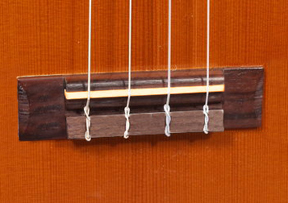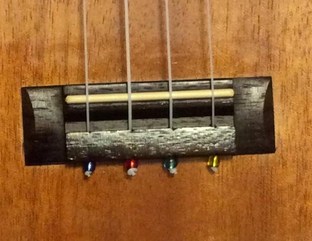| Most ukuleles employ a tie-on bridge like you normally see on classical guitar. (Right) For people new to the this, it can be a bit intimidating and frustrating to try to get the hang of tying the strings on correctly, without them coming undone as you tune. It's not terribly difficult, but it takes practice (which is your time), and it can take a bit more time to actually change the strings. If this is an issue for you, consider getting some small glass beads, tying the a good knot at the end of the string, then using the bead as a stop. In addition, if you keep all of the beads on one ukulele the same color, but alternate from uke to uke, it gives you the option of "grouping" your students when they're playing. For example, you would be able to designate that all students with blue beads work together, while red beads work in another group, or that your groups must have one of each color, etc. |
|
0 Comments
Leave a Reply. |
AuthorPaul Marchese is a middle-school vocal & general music teacher at Hadley Jr. High in Glen Ellyn, IL. He became a ukulele enthusiast several years back, and has been working to help other music teachers find the best way to utilize this instrument in their own classrooms. Archives
April 2017
Categories |


 RSS Feed
RSS Feed
